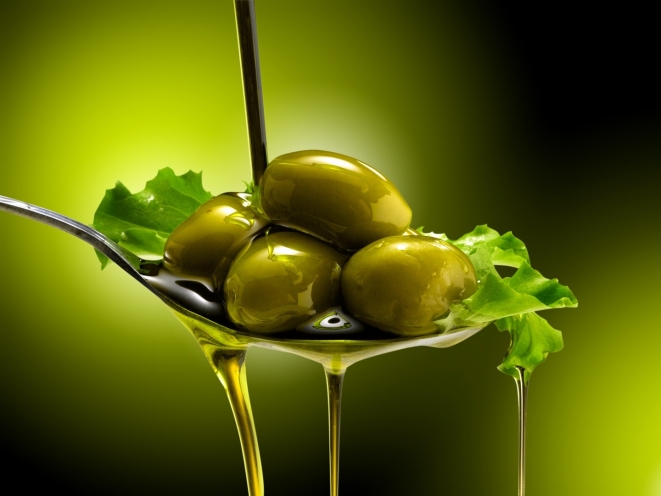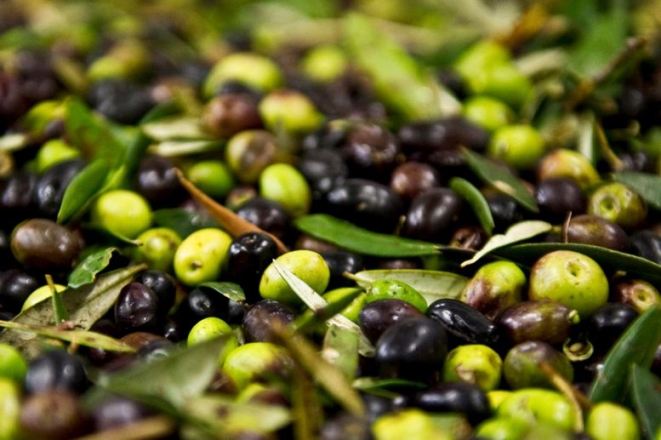The Sardinian olive oil
A millennial excellence
Olive groves are spread everywhere in Sardinia. The combination island-olive is inextricably linked. It is impossible to think about this land without the presence of olives and wild olive trees, shaken by the wind, in the rolling hills, down the slopes and along the valleys. Their widespread presence in many areas of the territory, (from plains to the higher hills), meant that the oil and oil products would become important in the Sardinian cuisine from ancient times.
Olive is a very ductile food and for which is used a lot in the first dishes but also in the seconds. The olive in oil, with the most diverse recipes are one of the starters that never fails in the most important lunches and dinners.
Immersed in brine for a few days, or packed in oil with garlic and parsley, mashed and seasoned with vinegar or salted and baked, stuffed, crushed and chopped up to obtain a spreadable cream; there are really many ways through which the olives can be served in the Sardinian tables.
But it is the product of their squeezing who consecrated internationally the region of Sardinia, not so much as the largest producer of oil, but certainly as one of the producers of best quality.
If olives are appreciated, Sardinian oil is even more and it can easily be considered one of the best oils of Italy.
In fact in 2015 the better national extra virgin olive oil belong the IGP Tuscany, the DOP Terra di Bari and the Dop of Sardinia. It is established to the panel of professional tasters of the thirteenth edition of the "Sirena d'Oro ", a national competition reserved for extra virgin olive oils.

The most famous and renowned varieties of olives of Sardinia are the Bosana (particularly widespread in the territory of Sassari and in the Nurra plain), the Nera di Gonnos (the Black of Gonnosfanadiga), the Semidana (Oristano), the Terza Grande and Piccola (the Third Great and Small, in the area of Gonnosfanadiga and Villacidro), the Pizz'e Carroga (Beak of Crow, a variety well known throughout the Island with a few minor variations), Olia Niedda (Oliva Nera, typical of Oliena) and Tonda di Cagliari (Round of Cagliari: widespread around Cagliari and in the territory of Oristano).
In Sardinia olive oil is produced everywhere and in some cases still with traditional systems. The majority of olive groves is a family or small business and this element has allowed and still allows a certain degree of protection as the processing and production is not threatened and disfigured by the logic that multinationals tend to maximize profit at the expense of quality.
These extraction techniques also respect the trees and preserve the fruits.
The transformation always occurs for finally squeezing exclusively with mechanical methods in small oil mills, in which the simple production steps can be easily checked.
Even today the mill, despite the many technological improvements, is a place of memory and especially in small villages an environment of strong and ancient social gathering.
The olive harvest is a centuries-old ritual and the small plot of land that has been passed down from father to son with passion and respect for the ancestor who has received it and with hard work and sweat has preserved and handed down in turn, if is not anymore economically a valuable asset it is great richness from an emotional and cultural the point of view.

In addition to this essential element, to make the Sardinian oil a highest quality product are also a territory and an ideal climate that lends itself well to this type of crop.
The harvest time is crucial to getting a good product and varies from mid-October through the end of January.
The Sardinian oil has a low acidity, an intense color and a strong flavor. It is used to flavor many dishes of traditional local cuisine and it is exported abroad as one of the excellent products of the Island.
But perhaps the best way to appreciate truly it is enjoying the oil when it just flows from the mechanical grinding with a piece of toasted bread. A treat for the palate, an unique treat and an unique flavor that contains the whole Island.